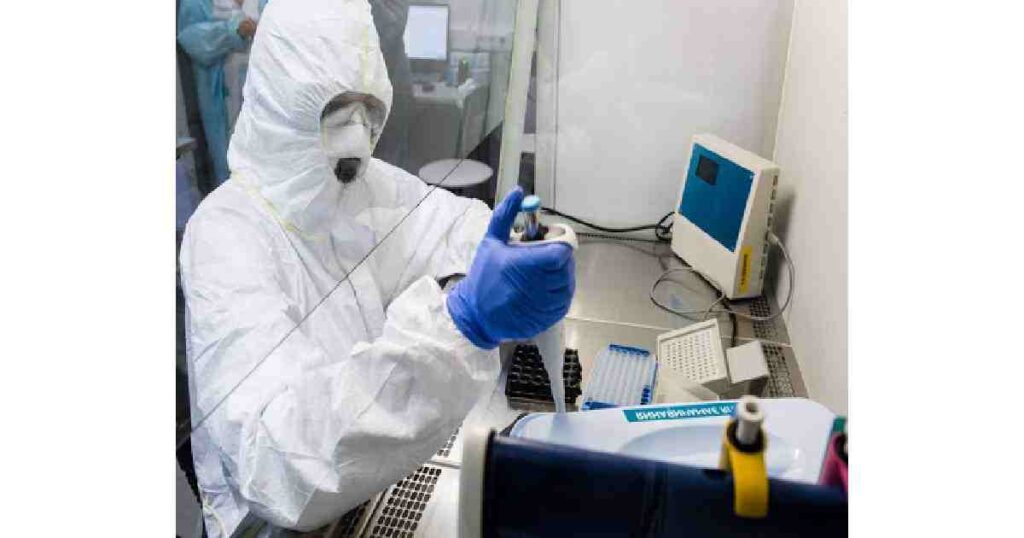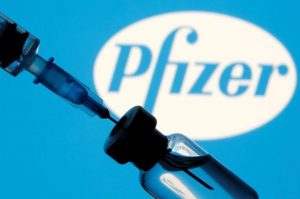Geneva, 4 May (TWN) – The European Union’s draft resolution on “COVID-19 Response” for the upcoming Seventy-third World Health Assembly (WHA) lacks clarity on the way forward with regard to shortages on access to medical products, according to civil society groups active on health issues.
The draft is also unclear on access to new products, currently under development.[The Executive Board of the World Health Organization has decided to hold the Seventy-third WHA through video conferencing. Besides its normal agenda under Article 18 of the WHO constitution, including organisational matters such as the selection of new Board members, the WHA, set to meet at 12:00 CET on 18 May, has one substantive agenda item, i.e. COVID-19.]
Various Member States of the WHO appear to have submitted comments or textual suggestions to the 6-page EU draft resolution dated 15 April 2020, which is now a 19-page draft.
Virtual negotiations on the draft, aimed at reducing the length of the document, began since 27 April. After 4 days of informal negotiations, the EU has agreed to produce a shorter version for further negotiation on 4 May.
The original draft has 21 preambular paragraphs and 5 operational paragraphs (OP), with each OP containing several sub-paragraphs.
OP1 commends the dedication of health workers and all other frontline personnel including WHO staff involved in the COVID-19 response.
OP2 “Recognizes population-wide immunization against COVID-19 as a global public good for health and the crucial role of quality, safe, and efficacious vaccines therein”.
OP3 has 12 sub-paragraphs on the commitments of Member States.
OP4 with 4 sub-paragraphs calls for the support of non-state actors.
OP5 contains 19 sub-paragraphs that set out the obligations of the WHO Secretariat through a request to the Director-General (DG) of the Organization.
SHORTAGE OF MEDICAL PRODUCTS
Many countries are facing problems with shortage of medical commodities such as medicines, as well as medical devices including diagnostic kits and personal protective equipment (PPE).
This is due to supply chain disruptions and increased global demand.
Countries are invoking national laws, such as the United States invoking its Defence Production Act, to direct its companies to supply to the US on a priority basis, superseding previous orders from other countries.
Increased global demand has predictably resulted in price hikes of raw materials and finished products, which also adversely affects access to these products in the developing countries.
To address this situation, the UN General Assembly on 20 April 2020 adopted a Resolution on “International cooperation to ensure global access to medicines, vaccines and medical equipment to face COVID-19” (A/74/274), suggesting a number of actions.
The UNGA resolution requests the UN Secretary-General to work with the WHO and other multilateral agencies to identify and recommend options, including approaches to rapidly scaling manufacturing and strengthening supply chains that promote and ensure fair, transparent, equitable, efficient and timely access to medical products including future vaccines.
Further, it establishes an inter-agency task force for the coordination and follow up “on the efforts of the United Nations system to promote and ensure global access” of medical products.
The General Assembly resolution provides a clear direction to the UN and WHO to take measures to ensure access to medical products.
As against this, the EU’s draft resolution, however, does not contain any concrete measures to take forward the mandate provided in the UN resolution.
OP5.10 requests the WHO Secretariat through the Director-General to “Update, as the situation evolves, the list of critical items for COVID-19 response and continue assessing the magnitude and nature of global shortages and supporting national authorities in their supply-related planning”.
But there is no guidance with regard to such support.
OP5.17 requests the Secretariat to prepare a plan in consultation with member states to achieve equitable access to quality, safe, and efficacious COVID-19 vaccines and other health technologies necessary for COVID-19 response and submit it to the consideration of WHO Governing Bodies.
This draft plan is to be prepared with inputs from relevant international organizations including WIPO, GAVI, UNITAID, the Medicines Patent Pool, CEPI, the Global Fund to Fight AIDS, TB and Malaria, and UNICEF.
What is missing here is that there is no explicit mention of ramping up production. However, the US is said to have proposed consultation with the private sector to “scale up manufacturing and distribution capacities needed”.
There could be many ways of ensuring equitable access to medical products, starting with a needs assessment and scaling up of manufacturing capabilities.
It is also important to take measures to ensure the products are not sold at high prices and are not exported only to the profitable markets as well as to take measures to prevent cartelisation.
In this regard, the measures taken by India on hydroxychloroquine (HCQ) tablets are worth noting.
The Government of India stepped in to ban the exports of HCQ by private companies without the permission of the government and insisted that importing entities route their requests through their respective governments.
In other words, India converted the export of HCQ into a government-to-government transaction to manage access by putting in place need-based supply of HCQ tablets to various countries.
It is important that WHO carries out assessment requirements and production capacities and obtain commitments from manufacturers, through member states, to guarantee supply of medical products to developing countries for the COVID-19 response.
Further, though the UN General Assembly resolution calls for the ramping up of production, the EU’s draft resolution for the WHA is silent on the role of member states and WHO in enhancing local production.
INTELLECTUAL PROPERTY PROTECTION
Unlike the HIV/AIDS crisis, patents are not the only intellectual property (IP) barrier affecting COVID-19 response.
News reports show that a range of IP, especially patents but including also industrial designs and trade secrets, can hinder access to existing and future medical products.
Use of the flexibilities in the Agreement on Trade-Related Aspects of Intellectual Property Rights is an important strategy to overcome these barriers.
The EU draft resolution does not make any explicit reference to IP barriers or the use of TRIPS flexibilities though OP3.8 indirectly urges member states to “As far as existing international treaties allow, remove the existing barriers in access (sic) quality protective equipment, medical devices and other technologies, medicines, and vaccines related to COVID-19”.
While it can be argued that the phrase “as far as existing international treaties allow” implies the TRIPS flexibilities, a positive formulation to make use of TRIPS flexibilities to address the access barrier would be preferable.
This would give a clear and unequivocal message to WHO member states to make use of the TRIPS flexibilities rather than create ambiguity and confusion.
The EU’s draft formulation is thus a weak proposition given that many existing UN and WHO resolutions ask States to make use of TRIPS flexibilities to address access to medical products.
For instance, the WHA resolution on Hepatitis (WHA 67.6) urged member states “to consider, as necessary, national legislative mechanisms for the use of the flexibilities contained in the Agreement on Trade-Related Aspects of Intellectual Property Rights in order to promote access to specific pharmaceutical products”.
Similarly, the Sustainable Development Goal on health has target 3.b that states: “Support the research and development of vaccines and medicines for the communicable and non-communicable diseases that primarily affect developing countries, provide access to affordable essential medicines and vaccines, in accordance with the Doha Declaration on the TRIPS Agreement and Public Health, which affirms the right of developing countries to use to the full the provisions in the Agreement on Trade-Related Aspects of Intellectual Property Rights regarding flexibilities to protect public health, and, in particular, provide access to medicines for all”.
It is interesting to note that while pitching for IP-driven innovation, the Director-General of WIPO has also acknowledged IP as a barrier and endorsed a qualified use of TRIPS flexibilities: “Intellectual property may also constitute a barrier to access, if innovation produces effective results and if countries are not able to obtain the innovation on appropriate and affordable terms. In this regard, provisions exist at the national and international levels to facilitate access where intellectual property is a barrier. The application of these provisions should be targeted and time-bound, in other words, related specifically to demonstrated intellectual property barriers to access in the course of the COVID-19 pandemic and bearing in mind that, without innovation, there will be nothing to have access to”.
In line with this WIPO line of reasoning, the US proposed language to OP5.17 that equitable access to medical products should be based on “while ensuring there are appropriate incentives for innovation”.
Though there is no evidence-based direct link between IP and innovation, the US and WIPO are pushing the IP agenda in the same direction.
Another missing link is compliance with the access and benefit-sharing obligations with regard to genetic materials, especially sharing of virus samples, contained in the Convention on Biological Diversity and its Nagoya Protocol. All countries (except the US) are Parties to the Convention.
The EU should take a lead to ensure fair and equitable benefit sharing of medical products arising from sharing of virus samples and digital sequence information, for COVID-19 response.
WHO can operationalise benefit sharing by seeking binding commitments from manufacturers for supply of existing and future medical products, especially diagnostics, therapeutics and vaccines, to developing and least developed countries at an affordable price.
OPEN INNOVATION
Though the pandemic situation demands expeditious development of new products, the EU’s draft resolution is silent on open innovation and R&D models and the role of WHO.
The UN General Assembly Resolution “Encourages member states to work in partnership with all relevant stakeholders to increase research and development funding for vaccines and medicines, leverage digital technologies, and strengthen scientific international cooperation necessary to combat COVID-19 and to bolster coordination, including with the private sector, towards rapid development, manufacturing and distribution of diagnostics, antiviral medicines, personal protective equipment and vaccines, adhering to the objectives of efficacy, safety, equity, accessibility, and affordability”.
However, the draft resolution has nothing on furthering such international cooperation.
OP3.9 only urges Member States to “Invest in and support research and development of diagnostics, treatments, therapeutics, medicines, and vaccines as appropriate and to sustainably strengthen national R&D capacities for the current and future outbreaks, and collaborate in order to harmonise efforts as appropriate, with all relevant international actors in this field”.
OP5.8 requests the Secretariat to “Compile, share and exchange knowledge of academic and other research on the COVID-19 pandemic and leverage the role of the WHO Academy in this regard”.
TWN learned that the US has already proposed amendments to the draft text to qualify this mandate. The US proposed that the sharing should be “With the voluntary consent of the relevant right holder(s), including authors and publishers, compile, and as appropriate …” as well as added the phrase “while respecting any intellectual property rights in this work”.
OP5.15 further requests the Secretariat to “Continue to work with researchers, research funding organisations, the private sector, philanthropic organisations and further partners to ensure a focussed and coordinated R&D effort to develop and scale-up countermeasures, including treatments and diagnostic tests for COVID-19′.
The US has proposed that the coordination should be “through mutually-agreed-upon knowledge sharing”.
However, the governing principles of R&D are not clear i.e. whether access to new products is ensured without IP barriers.
Previous WHA resolutions on Ebola explicitly delinked R&D cost from the price of the product to ensure access.
The resolution adopted at a special session of the WHO Executive Board called on member states “to continue to collaborate as appropriate, on models and approaches that support the delinkage of the cost of new research and development from the prices of medicines, vaccines, and other diagnostics for Ebola and other emerging and neglected tropical diseases, so as to ensure their sustained accessibility, affordability, availability, and access to treatment for all those in need”.
Such a clear and bold direction is missing from the EU’s draft resolution.
Thus, the draft resolution is not adding anything qualitatively to change the status quo to address shortages, access and fair and equitable benefit sharing, IP protection and R&D models in the context of COVID 19.
On the contrary, it dilutes previous resolutions on access to medical products, worsened by the proposed US changes to the draft text.
(With inputs from health sector CSOs.)
Published in SUNS #9113 dated 5 May 2020




